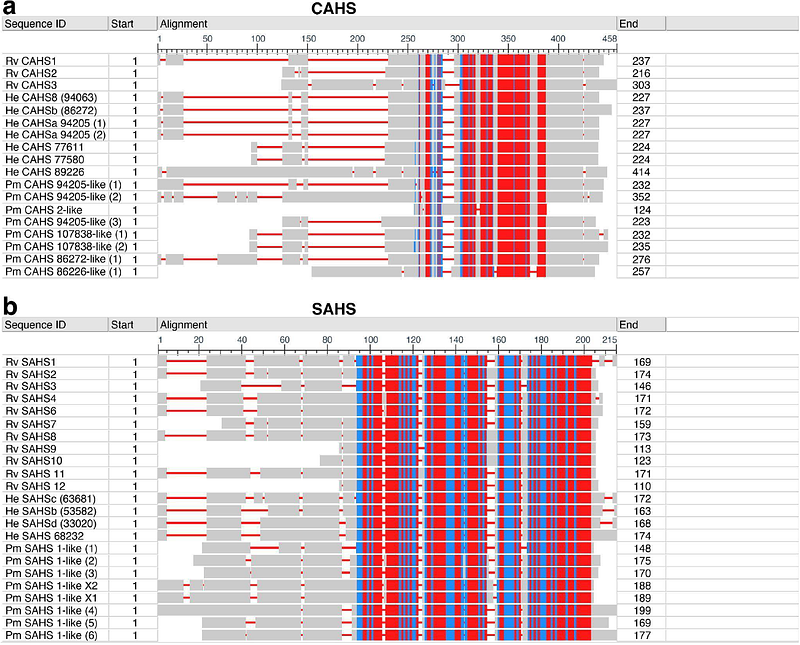Mechanistic Insight of Tardigrade Anhydrobiosis via Protein Structural Analysis

Mechanistic Insight of Tardigrade Anhydrobiosis via Protein Structural Analysis
Zhang, C.
AbstractTardigrades are microscopic animals exhibiting exceptional tolerance to extreme environmental stresses such as desiccation. Hence, they provide unique solutions to biological preservation, anti-aging, and interstellar travel. Recent studies show that various cytoplasmic and secretory abundant heat soluble proteins (CAHSs and SAHSs) enable tardigrades to survive complete dehydration and revive upon rehydration. Using bioinformatic tools, possible molecular mechanisms underlying the protective effect of CAHSs and SAHSs were investigated. The gene and protein sequences of 18 CAHSs and 23 SAHSs from three representative tardigrade species (i.e., Ramazzottius varieornatus, Hypsibius exemplaries, and Paramacrobiotus metropolitanus) were collected from public-accessible databases. Sequence analyses revealed that both CAHSs and SAHSs possess a highly conserved center region bounded by two terminal regions variable in lengths and amino acid compositions. Analysis using AI-based AlphaFold 3.0 showed that the aforementioned terminal regions were disordered in normal physiological conditions. As for the center regions, CAHSs formed a long alpha-helix domain while SAHSs folded into a mixture of alpha-helix and beta-sheets. Furthermore, the trimers and decamers of CAHSs and SAHSs were generated to simulate their structural changes upon dehydration. Intriguingly, CAHS trimers generally formed linear bundles and their decamers were mostly circular, likely providing mechanical support for intracellular structures. In contrast, SAHS trimers or decamers were largely spheric with differently exposed tails, likely filling extracellular spaces or behaving as chaperones. These results suggest different strategies taken by tardigrades to counteract intracellular hyperosmosis and extracellular exsiccation respectively, inspiring new strategies to preserve biomolecules, cells, and tissues in extreme environments.